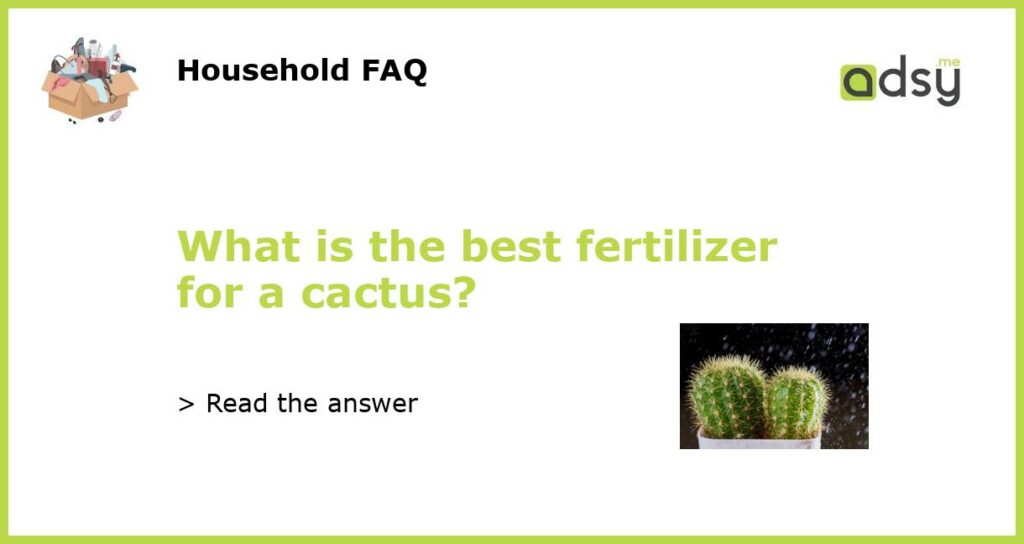Understanding Cacti Fertilization
Cacti are unique plants that grow in arid environments and are highly adaptive to changing climatic conditions. They require minimal maintenance and can survive without much water or nutrients. However, like all plants, cacti require nutrients to grow and thrive. Fertilizing your cactus is essential, but you have to choose the right type of fertilizer, as not all fertilizers are suitable for these plants.
Choosing the Best Fertilizer for Your Cactus
The best fertilizer for cacti is one that is low in nitrogen, high in phosphorous, and potassium. Nitrogen is essential for plant growth but is not suitable for cacti as they prefer low-nitrogen soil. Excess nitrogen can lead to excessive foliage growth, which may cause the cactus to become top-heavy, leading to falling or tipping over.
Phosphorous, on the other hand, is essential for root development and helps the plant store energy, while potassium helps in flower and fruit formation, and strengthens the plant’s resistance to stress and diseases. Consider a balanced fertilizer with equal amounts of each nutrient for cacti in high heat, water, and sun exposure areas.
Types of Fertilizer for Cacti
There are different types of fertilizers you can use for your cactus, including synthetic and organic fertilizers. Synthetic fertilizers contain artificial chemicals, while organic fertilizers are made from natural substances. When choosing your fertilizer type, consider the age of your cactus.
You can use a liquid fertilizer, a slow-release fertilizer, or a granular fertilizer. Slow release fertilizers work well with mature cacti as they release nutrients over a more extended period, while liquid fertilizers and granular fertilizers work better with younger plants.
When to Fertilize Your Cactus
Cacti are slow-growing plants and do not require frequent fertilization like other plants. They require nutrients only during their active growth period from spring to summer. Withhold fertilizer during fall and winter rest periods when the cactus is dormant.
To avoid damaging your cactus, do not fertilize it when the soil is dry. Water your plant first, then fertilize after a few days to allow the soil to absorb water and prevent salt buildup.
Fertilizing your cactus is essential to help it grow and flower healthily. When shopping for the best fertilizer, go for a low-nitrogen, high phosphorous and potassium type. Also, choose a fertilizer suitable for your plant’s age and cycle, and avoid fertilizing when the soil is dry. With this knowledge, you can now take good care of your cactus and enjoy its beautiful flowers and unique growth patterns.






